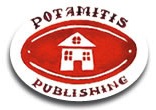Periodically, I'll post updates on how seminary life is going. If it proves edifying for readers I'll keep it up.
I had a few preconceived notions as one might imagine about life up here. I expected it to be cold; I've already worn a sweatshirt on one early morning drive to seminary for Matins. Food is necessarily quite different and small town living, while I love it, is an adjustment. There is not a FedEx Office on every corner, a UPS Store in every shopping center, or all the ethnic fare I'm used to treating the family to. The courses I expected to be difficult have proven to be so. "Seminary translations" are always a bit different than parish use. But, truly, the largest adjustment has been my time away from the wife and family.
Before moving up North from the Lone Star State I worked from home, and, while I had an office, I came out to visit with the family when I could. Now I spend my waking hours at the seminary and the time away pulls at the heart strings a bit. So I was delighted to discover during a meal the first week of classes an
icon written over the water fountain (to join in the comedy of this icon's placement, read the scroll's text) in the trapeza. My wife's patron saint is the Samaritan Woman, St. Photini (Svetlana). Now as I eat meals she is invariably at my side. I can remember her during meal time prayers, stop for a moment to kiss the icon as I walk to class, and think about her when I go get water throughout the day. It's an unexpected blessing I treasure immeasurably.
Alone she is now facing all the children, all the cooking, all the cleaning. Alone she is trying to keep our itinerant dog from bolting out of the house - whenever the door is opened by an unwary child - to explore neighbors' yards, smell everything in sight, and chase rabbits. Alone she makes trips to doctors, shops at supermarkets, and meets with teachers at schools. And yet she is not alone in her prayers. As I pray for her and our family she does the same. Together in prayer, if separated by some few miles, we ask God's protection and direction. Written on the wall is a reminder to pray constantly for her as I know she does for me. Seminary life is difficult for families (as Fr. Chad Hatfield alluded to this in his
orientation talk at St. Vlad's just a few weeks ago), but if we are guided by Him I have faith we'll come out of this experience strengthened in faith and, in an odd paradox, closer to one another.

















































